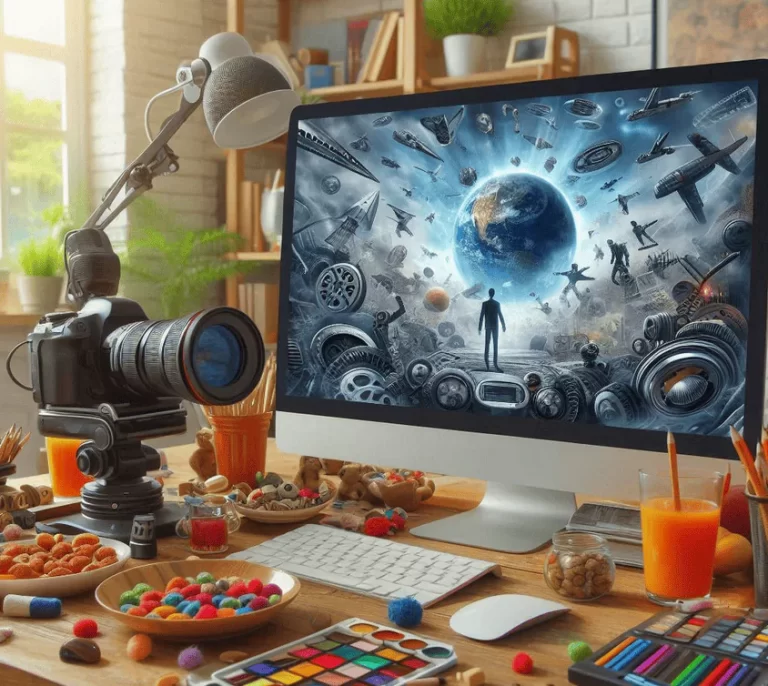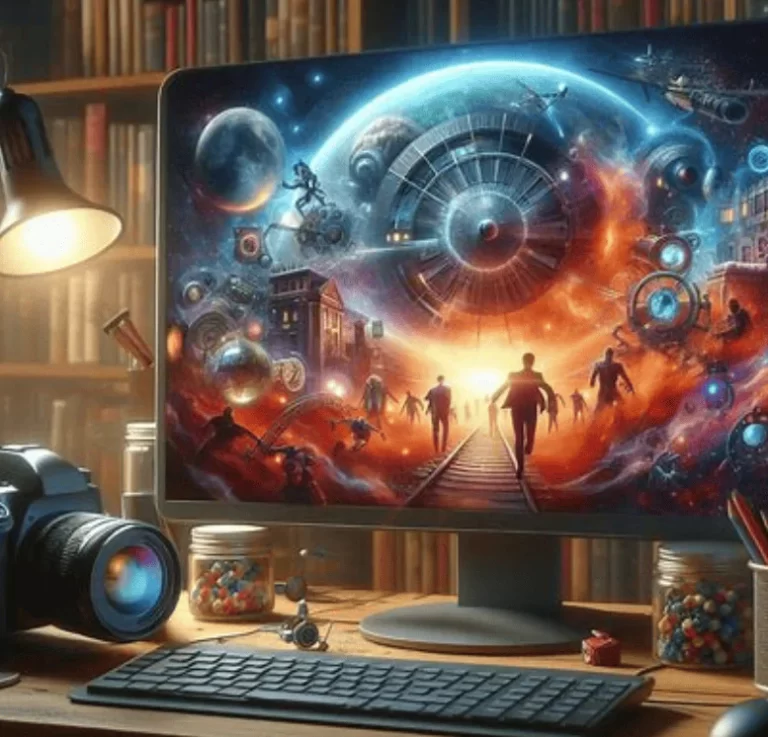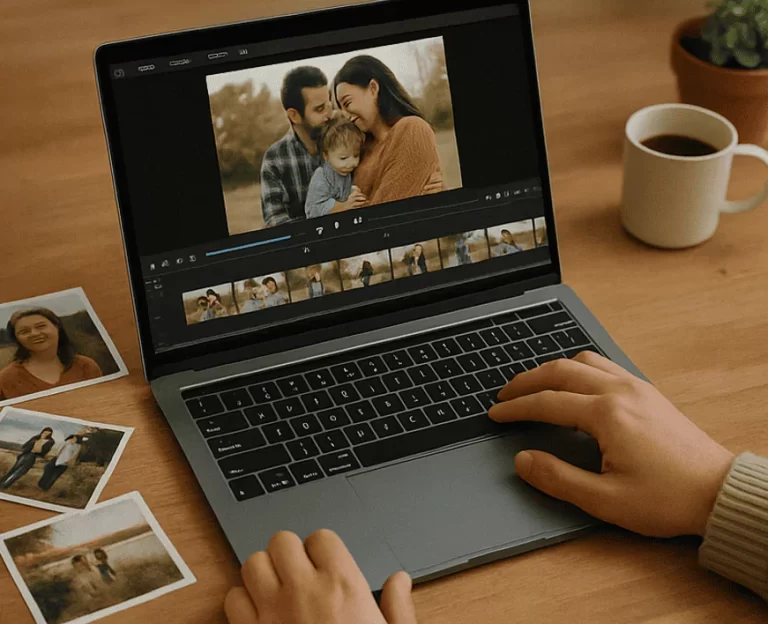
Digital Art Art, in its myriad forms, has always been a mirror to humanity’s progress and imagination. From the cave walls of Lascaux to the frescoes of the Sistine Chapel, artists have consistently embraced the tools and materials of their time. In the modern era, a new medium has emerged—one that defies the tactile constraints of traditional methods. This is the era of digital art, a transformative movement that bridges technology and creativity, unlocking realms previously unimagined.
The Origins of Digital Art
The story of digital art begins in the mid-20th century, during the infancy of computer technology. Early pioneers like Ben Laposky and John Whitney used oscilloscopes and analog computers to create abstract visuals, marking the first steps toward a digital aesthetic. These trailblazers saw potential where others saw mere machines, envisioning computers as instruments of artistic expression.
By the 1980s, the advent of personal computers brought digital art into the mainstream. Programs like MacPaint allowed users to create images with a mouse, democratizing artistic creation. The rise of graphic design software like Adobe Illustrator and Photoshop further expanded possibilities, offering artists precision and flexibility unheard of in traditional mediums.
The Tools of Transformation
At the heart of digital art lies its tools—software and hardware that enable creators to craft with unprecedented freedom. Advanced programs such as Procreate, Corel Painter, and Blender provide artists with a suite of capabilities, from realistic brush simulations to complex 3D modeling. Each tool adds layers of depth and versatility to the artist’s palette.
Hardware innovations have played an equally vital role. Graphics tablets like Wacom and Huion have transformed how artists interact with their work, offering sensitivity and accuracy that rival traditional brushes. More recently, virtual reality headsets and motion controllers have introduced spatial creativity, allowing artists to sculpt and paint in immersive environments.
The Unique Characteristics of Digital Art
What sets digital art apart from traditional forms is its inherent fluidity. Artists can experiment with color, composition, and texture without the fear of irreversible mistakes. The ability to work in layers, duplicate elements, and apply non-destructive editing empowers creators to refine their visions endlessly.
This medium also offers boundless scalability. Whether it’s a detailed icon or a sprawling digital mural, digital art can adapt to any format, retaining its clarity and vibrancy. This makes it particularly suited for commercial applications, from advertising campaigns to video game design.
Moreover, digital art is uniquely positioned to embrace interactivity. Unlike static paintings or sculptures, digital pieces can evolve in response to user input, creating dynamic experiences. This capability has given rise to interactive installations and generative art, where algorithms and randomness play a role in the final composition.
The Cultural Impact of Digital Art
As a reflection of its time, digital art embodies the interconnectedness of the modern world. Social media platforms like Instagram and ArtStation have become virtual galleries, enabling artists to reach global audiences without intermediaries. This direct connection fosters a sense of community among creators, where collaboration and feedback thrive.
The influence of digital art extends far beyond the traditional art world. In the entertainment industry, it serves as the backbone for animated films, video games, and special effects in blockbuster movies. It is also integral to branding, advertising, and even virtual reality simulations, cementing its role as a cornerstone of contemporary visual culture.
Challenges and Controversies
Despite its many advantages, digital art faces its share of challenges. One major issue is the perception of value. Traditional art often carries an aura of uniqueness, rooted in the physicality of the medium. In contrast, digital works can be replicated endlessly, leading some to question their worth.
The rise of blockchain technology and non-fungible tokens (NFTs) offers a potential solution. By tying digital works to unique identifiers, NFTs establish authenticity and ownership, elevating digital art within the broader art market. However, this approach has sparked debates about environmental impact, given the energy-intensive nature of blockchain networks.
Another challenge is the sheer pace of technological change. Artists must continually adapt to new tools and platforms, balancing the need for innovation with the risk of obsolescence. While this dynamic environment fosters creativity, it can also be daunting for those accustomed to slower-paced artistic traditions.
The Evolution of Styles and Techniques
Over time, digital art has developed its own lexicon of styles and techniques. Some artists strive for hyperrealism, creating works that rival photography in detail and accuracy. Others embrace the abstract, leveraging the medium’s flexibility to craft surreal, dreamlike compositions.
A particularly intriguing trend is the fusion of traditional and digital methods. Many contemporary artists begin their work on a physical medium—sketching or painting—before transitioning to digital platforms for refinement. This hybrid approach marries the tactile qualities of traditional art with the precision and versatility of digital tools.
Generative art represents another frontier, where algorithms and artificial intelligence play a central role. By setting parameters and variables, artists can create pieces that are unique yet governed by mathematical principles. This blurring of human and machine creativity challenges conventional notions of authorship and intention.
The Role of Artificial Intelligence in Digital Art
Artificial intelligence (AI) is reshaping the landscape of digital art. Tools like DeepDream and GANs (Generative Adversarial Networks) allow artists to collaborate with machines, generating works that range from the uncanny to the sublime. AI can also assist in mundane tasks like coloring or object recognition, freeing artists to focus on higher-level creative decisions.
Critics argue that AI-driven art lacks the emotional depth of human-created works. However, proponents view it as an extension of the artist’s toolkit, much like the paintbrush or chisel. By harnessing AI, creators can explore uncharted territories, pushing the boundaries of what art can achieve.
Educational and Therapeutic Applications
Beyond its aesthetic and commercial value, digital art has found applications in education and therapy. In classrooms, it serves as an accessible medium for teaching design principles and fostering creativity. Its low barrier to entry makes it ideal for students who might lack access to traditional materials.
In therapeutic settings, digital art offers a safe space for self-expression. Programs designed for art therapy can help individuals process emotions, build confidence, and develop problem-solving skills. The immediacy of the medium allows participants to experiment freely, promoting a sense of agency and accomplishment.
The Environmental Implications of Digital Art
While digital art eliminates the need for physical materials, it is not without environmental consequences. High-powered computers, tablets, and servers require significant energy, contributing to carbon emissions. Additionally, e-waste from obsolete devices poses a growing challenge.
Sustainability initiatives within the tech industry aim to mitigate these effects. Companies are developing energy-efficient hardware and exploring renewable energy sources for data centers. Artists, too, are becoming more conscious of their ecological footprint, opting for greener practices wherever possible.
The Future of Digital Art
As technology continues to advance, the future of digital art holds endless possibilities. Augmented reality (AR) and mixed reality (MR) are already blurring the lines between the digital and physical worlds. Artists can create works that exist simultaneously in both realms, offering immersive experiences that redefine audience engagement.
The integration of blockchain and decentralized platforms could further revolutionize the art market. By enabling artists to sell directly to collectors, these technologies bypass traditional gatekeepers, fostering a more equitable ecosystem.
Perhaps most exciting is the potential for digital art to become a truly collaborative medium. As networks and tools become more interconnected, creators from around the globe will be able to co-create in real-time, blending cultures, styles, and perspectives into unified masterpieces.
Conclusion
Digital art is more than a medium; it is a movement—a testament to human ingenuity and adaptability. It bridges the divide between tradition and innovation, offering a space where imagination knows no bounds. As we continue to explore its possibilities, this transformative art form will undoubtedly shape not only how we create but how we perceive the world around us.



